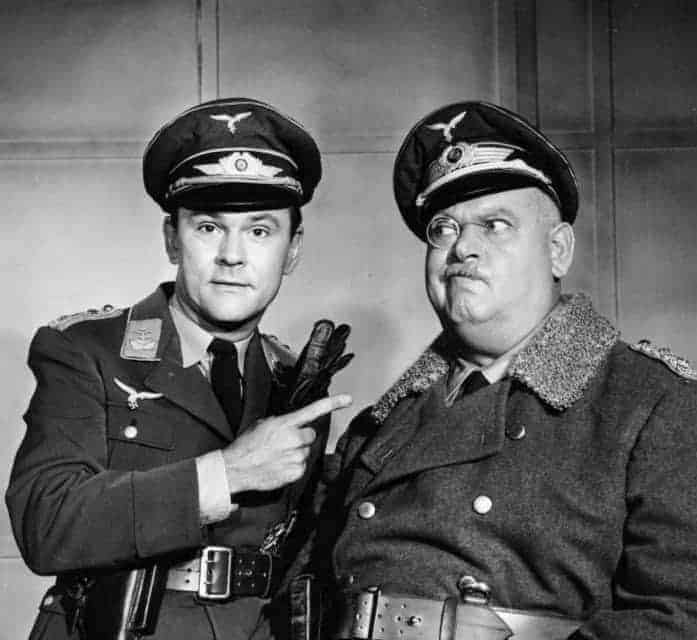Beginning in the 1950s and lasting well into the 1970s, history was presented in both dramatic and comedic fashion on television. Many of the most popular programs which presented historic characters and events have become popular again on cable networks which focus on nostalgic television. Being presented as entertainment, some of these shows present what they call history as pure fiction while others are more or less true to historical events. For example, the television Daniel Boone remained in Kentucky into the nineteenth century, the real Daniel Boone was long gone to Missouri by that time.
Throughout the fifties, sixties, and into the seventies television featured tales of the American west, stories about World War II, and programs which described American heroes of the past. Disney created a media and marketing sensation with its heavily fictionalized biographic films about Davy Crockett. Wyatt Earp, Wild Bill Hickok, Kit Carson, Daniel Boone, and other characters whose names resonate in American history appeared on the small screen. Later a television invention, the situation comedy presented history in a “war is fun” light. American history is a large part of the history of American television.

Here are just ten examples of history on television, what it got right, and what it got wrong.

Combat!
In the opening credits for the World War II series which featured American infantry at the squad level fighting their way across France in 1944, the exclamation point in the title was signified with a bayonet. Combat! made its debut in 1962 and lasted through the 1967 season before growing anti-Vietnam War sentiment made war related programs less popular. Several of its episodes were directed by Robert Altman, later nominated five times for the Oscar for Best Director. Combat! was a black and white production for four of its five years on the air. When Germans or French people spoke, it was in their native languages and there were no subtitles.
This nod to realism was part of what made the show a gripping depiction of the life of a combat infantryman during the Second World War. Although the squad of Americans featured a French speaking Cajun who could interpret from French to English, spoken German was seldom interpreted, and the viewer, like the characters on-screen, were forced to guess at what was being said. The weapons used by the main cast were correct for the period, as was the remaining equipment on the Allied side. Actual combat film was used frequently, adding to the sense of realism, including scenes of both German and American artillery.
Combat! focused on individuals trapped in war. The fatigue of the soldiers was on constant display, as was a fact of infantry life – the ground is an infantryman’s best friend. Guest stars were often replacements for members of the squad who had been killed or wounded, meaning other than the main characters the brothers in arms were an ever-changing family. Some men could be trusted in combat, others couldn’t. Rough, brusque exchanges between the soldiers were a fact of life during the war and on the show. The displeasure with the never changing rations, the lack of opportunity to bathe and don clean clothing, and the constant pressure from both their own officers and the opposing Germans was a feature of the scripts. It was the war through the eyes of the lowest ranking soldiers and their non-coms.
As the show evolved over its run it offered more episodes in which the squad interacted with the French citizens and German prisoners. Most of the Germans were depicted as professional soldiers rather than Nazi zealots. More guest stars appeared as Germans and French citizens as the story line which had focused on replacements for the squad, who were usually killed at the end of the episode, began to run thin. The list of guest stars was long and distinguished, including Telly Savalas, Ricardo Montalban, Frankie Avalon, Beau Bridges, Dennis Hopper, Charles Bronson, and Leonard Nimoy, among many others.
No other show on television approached the Second World War as did Combat! Through its run it depicted troops in the field having to consume their rations using their ponchos to shield them from the pouring rain, facing sudden and heart shocking attacks, and then being forced to resume some semblance of humanity. While all of its stories were written as fiction and the squad was wholly fictitious, it presented men at war in a manner which would not be replicated in its realism either on television or in film for decades. For the most part, Combat! was one television show which got history right.

